The Soča Valley: All quiet on the Isonzo Front
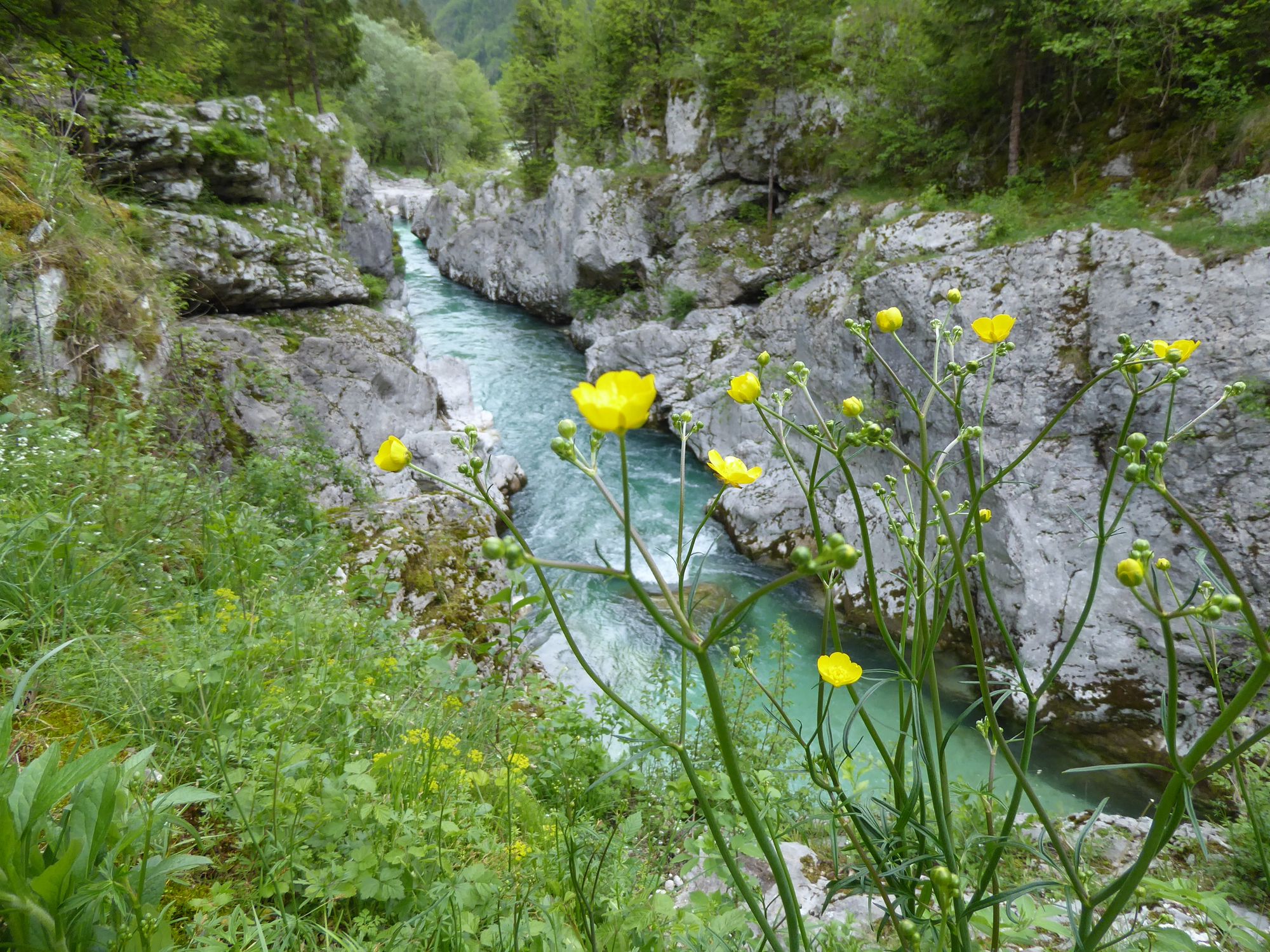
Northwest Slovenia is one of Europe’s borderlands, a place where the ebb and flow of history has left the landscape littered with the remnants of fallen empires.
The Soča Valley changed hands four times during the twentieth century: from Austria-Hungary, to Italy, to the Nazis, then the Yugoslav republic, before ending up part of the newly independent Slovenia in 1991.
We approached the valley from Kranjska Gora in the north, crossing the notorious Vršić Pass over the Julian Alps. This pass, the highest in Slovenia, was originally built during the 19th century. During the First World War the pass took on greater strategic importance, and Russian prisoners of war were forced to build a military road over the mountains by their Austrian captors. More than 100 prisoners were killed by an avalanche in 1916, and many more died during the construction of the road. A simple wooden chapel, close to the northern end of the pass, stands as a poignant tribute to the sacrifice of these men.
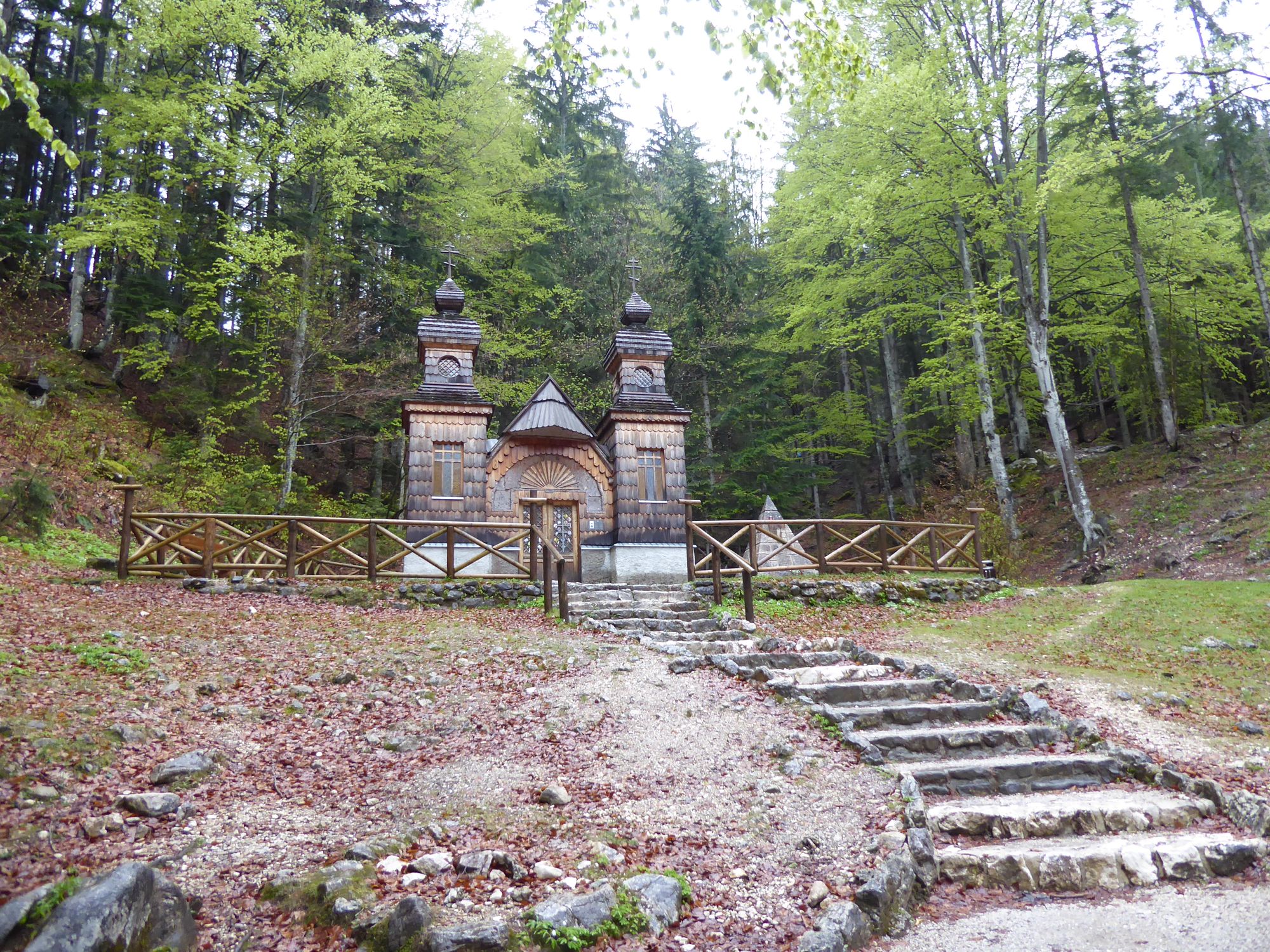
Crossing the Vršić Pass is supposed to be a spectacular drive over the mountains, with plenty of places to pull over and admire the view. Unfortunately we'd picked a particularly bad day for it, with the vistas obscured by low cloud and driving rain, which turned to snow as the road wound its way ever higher. The smartest option seemed to be getting over the pass as quickly as possible, rather than stopping to check out the view and risk getting stuck in the snow.
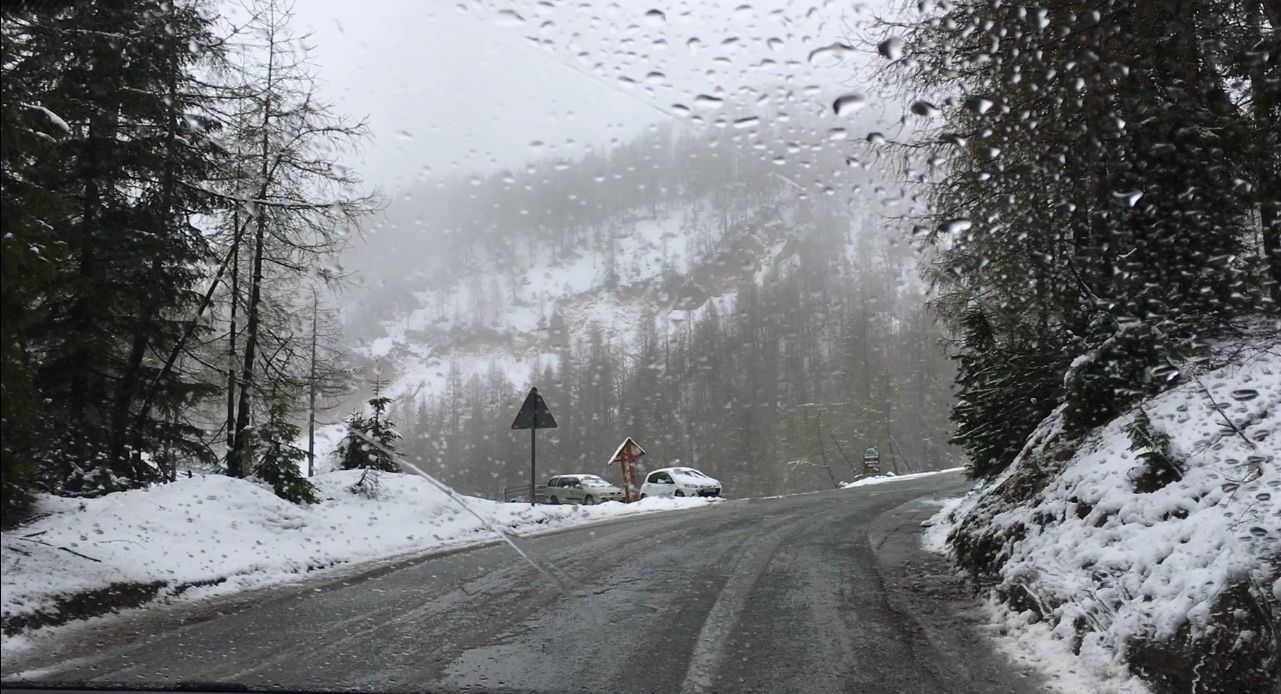
The road topped out at 1,611 metres above sea level before quickly descending again into the Soča Valley. Soon the snow turned back into rain, and we could breathe a little easier. After the endless switchbacks the road flattened out, following the course of the brilliantly turquoise Soča river. This river is known as the Isonzo in Italian, and the Isonzo Front is one of World War I’s forgotten battlefields, where Germany and Austria-Hungary clashed with Italy in a miserable campaign of mountain warfare.
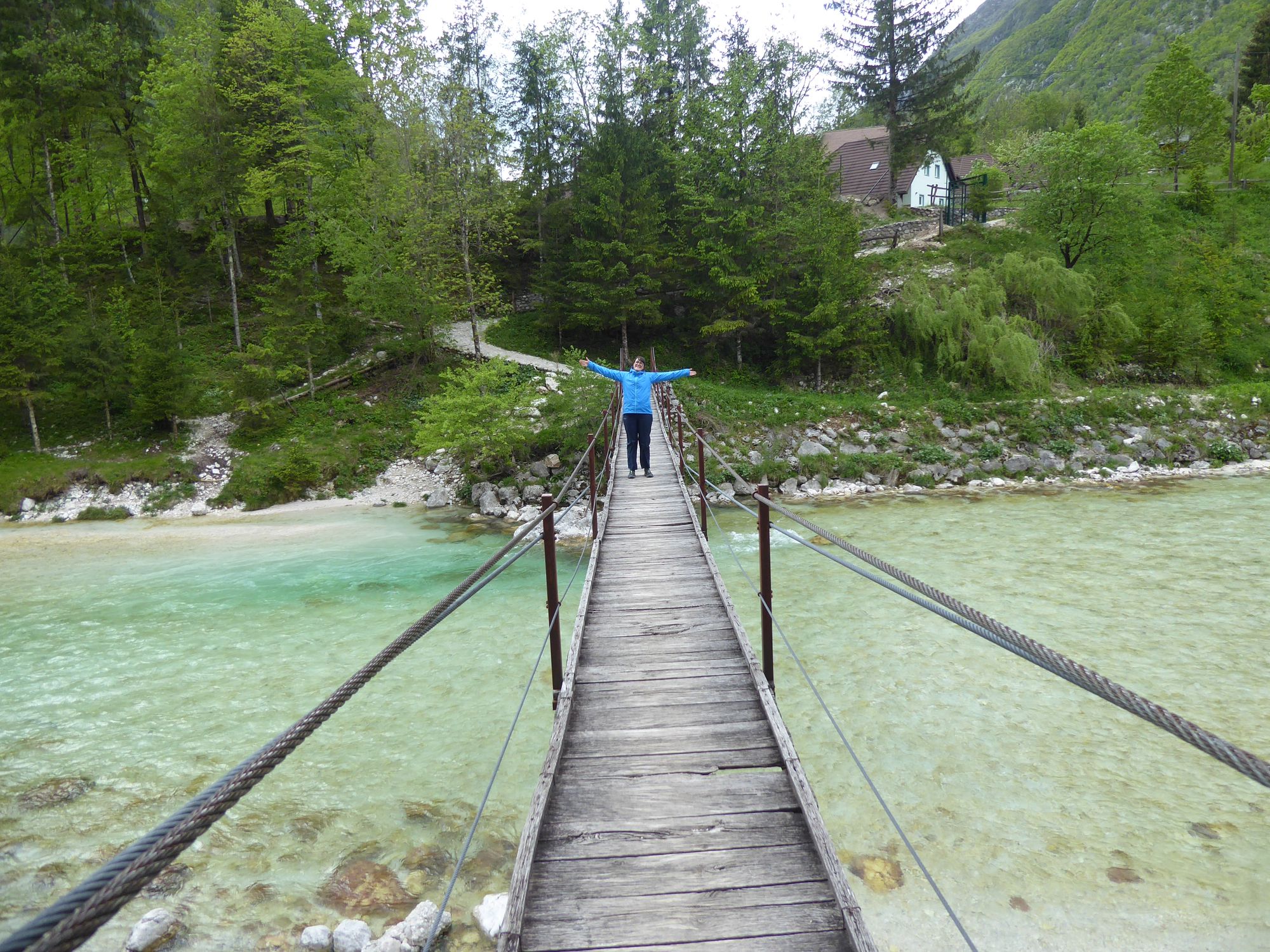
One of the men serving at the front was a young Ernest Hemingway, and the campaign was the inspiration for his novel A Farewell To Arms, first published in 1929. The book is based on Hemingway's own experience as a volunteer ambulance driver, and centres around the chaotic Italian retreat following the Battle of Caporetto in late 1917. The battle was one of the greatest defeats in Italian military history, and resulted in a rare breakthrough, as Austrian and German forces advanced more than 60 miles towards Venice. Caporetto now lies within Slovenian territory, known by its Slovenian name of Kobarid, but the town still has something of a Mediterranean feel.
The rain was coming down in sheets as we arrived in Kobarid, so we scuttled straight for the town's museum, which is packed full of information on the battle and the wider Isonzo campaign. In fact, the sheer amount of information was a little overwhelming. Like a lot of small provincial museums, it seemed they had decided to put every single piece of memorabilia they owned on display, rather than presenting a more curated selection to tell the story in an engaging way.
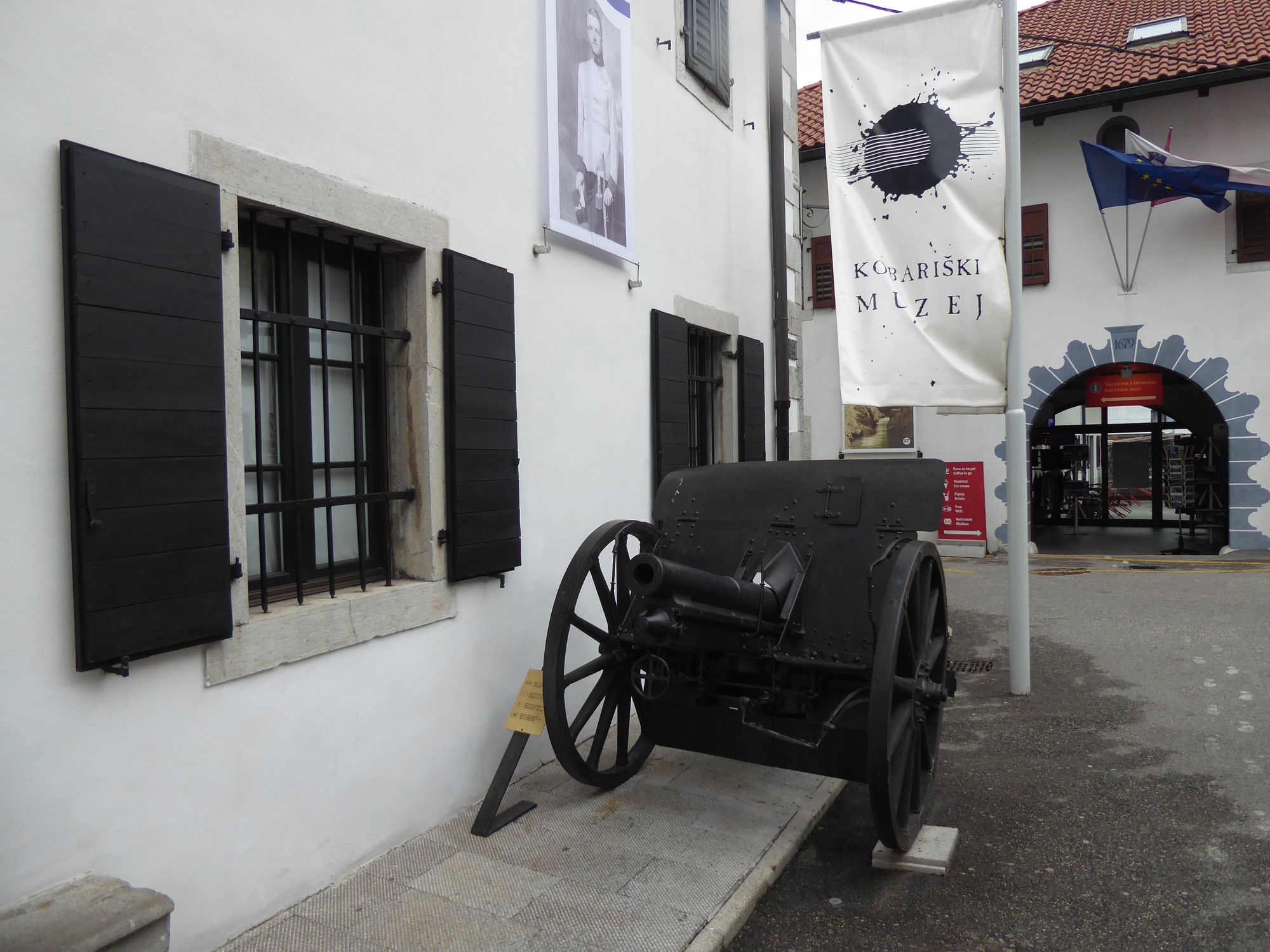
Nevertheless, we left the museum feeling like we'd learned a lot about this forgotten battlefield. The situation on the Isonzo Front was grim, even in the context of such an awful war. A brutal campaign of trench warfare raged across mountainous terrain, often in freezing winter conditions, and both sides suffered appalling casualties. The Italians lost some 300,000 men on the Isonzo Front, half of their entire wartime death toll, while the Austro-Hungarians lost around 200,000.
We were both struck by how little we knew about this campaign, and about the Austrian experience of the war in general. We just weren't taught about it at school; all the focus was on the Western Front and the Russian Revolution.
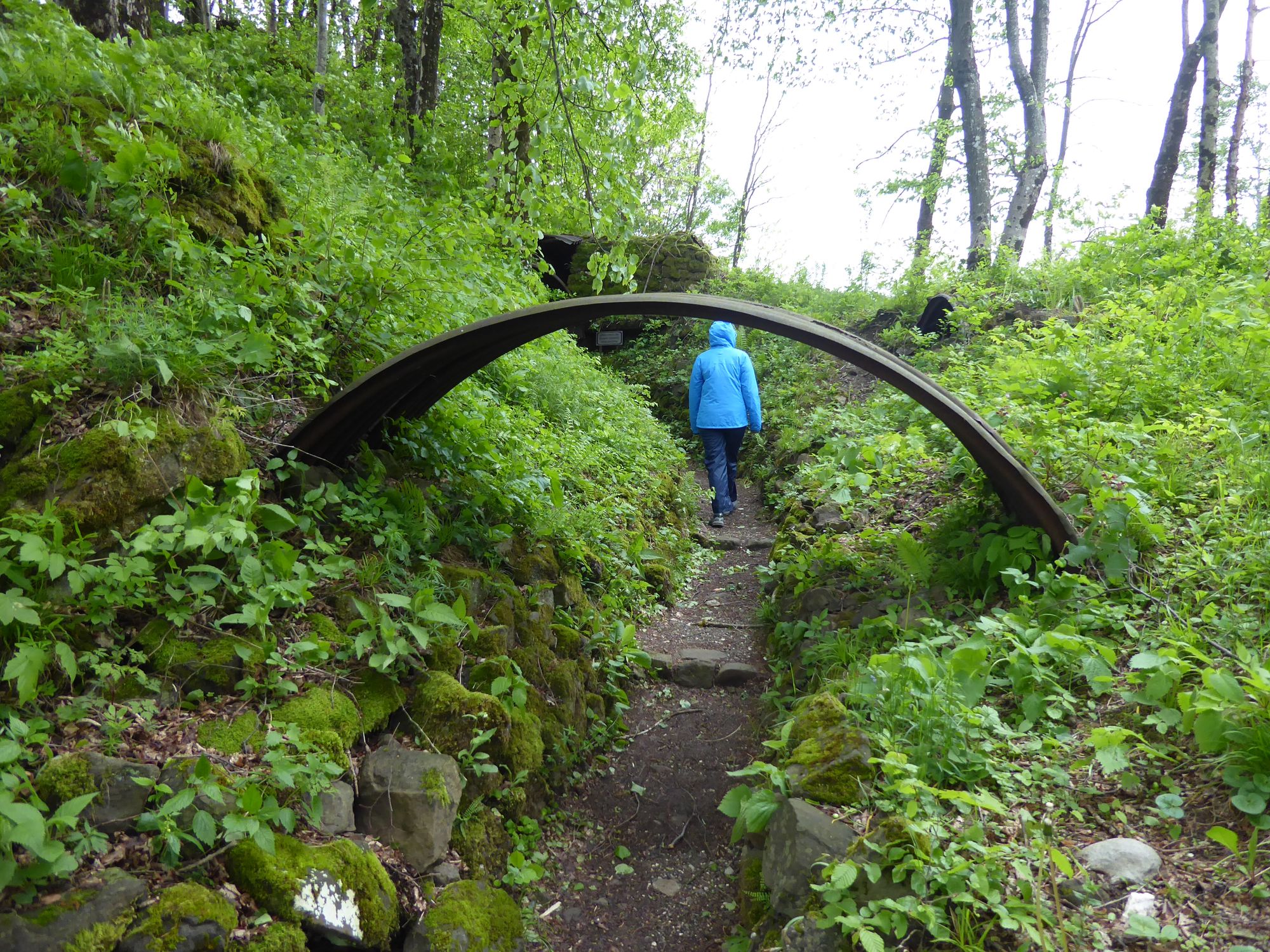
The next day the rain was still falling, but we decided to don our waterproofs and press on with our plan to spend most of the day outdoors, learning more about the history of the Soča Valley.
Our first stop was the Ravelnik Outdoor Museum, where some of the Austrian trenches and fortifications have been left intact. The place was deserted on this rainy and miserable morning, and the weather added to the ghostly atmosphere of the place, a reminder of the far harsher conditions that the soldiers here faced. Pink wildflowers sprouted next to rusted coils of barbed wire, and the wind whistled through the letterbox-shaped windows looking out from the bunkers. A network of dank, dripping tunnels ran under the ground, while up on top of the hill a grenade crater was still clearly visible beneath the foliage.
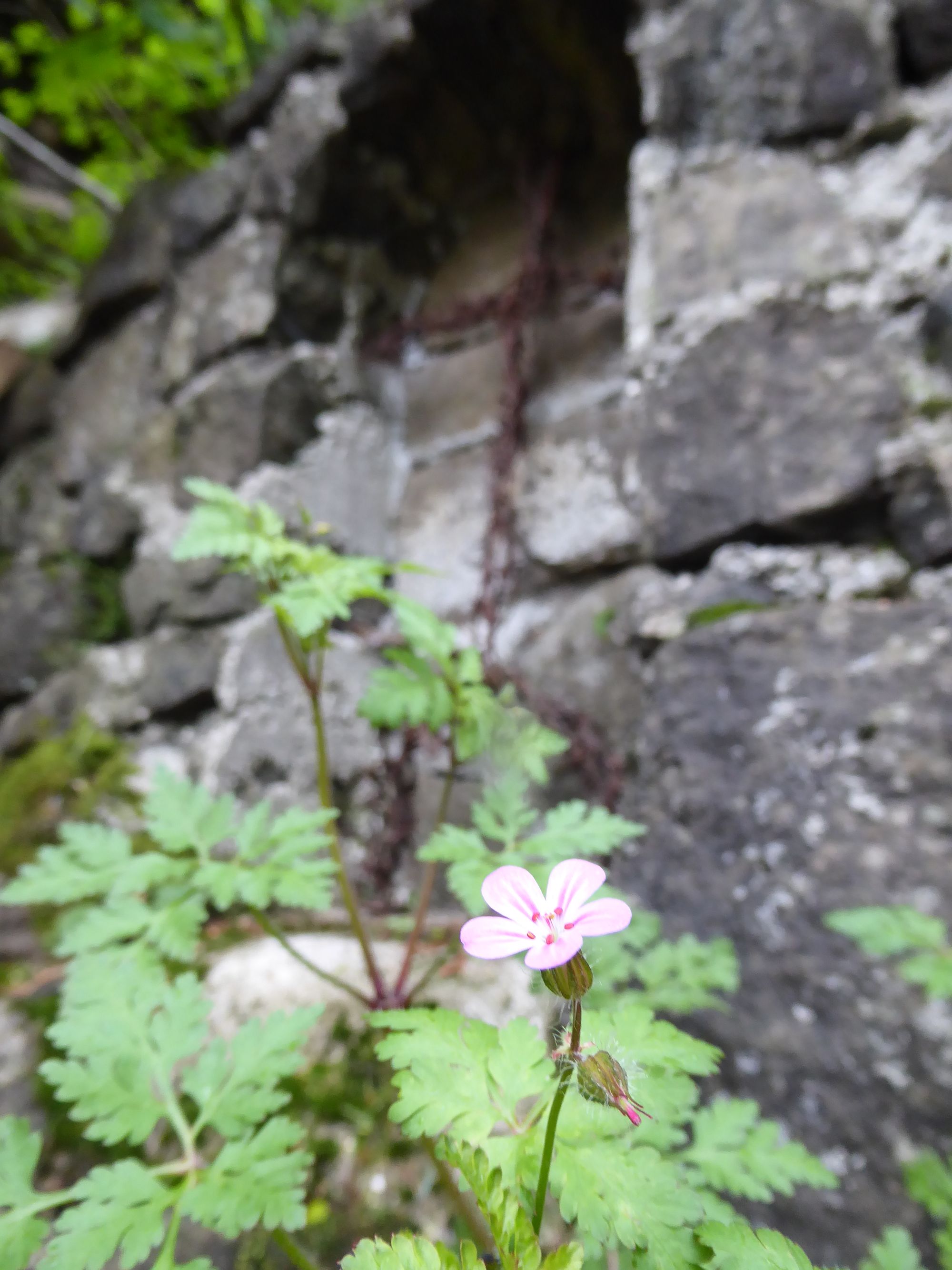
From Ravelnik we drove north towards the Italian border, along the road that follows the Koritnica river, a tributary of the Soča. We soon came to another key strategic location, where the Koritnica gorge is flanked by two forts. Next to the road is Fort Kluže, originally built in the 15th century to defend against the Turks and later upgraded to repel the armies of Napoleon Bonaparte. The fort was closed on the day we visited, so we crossed the road and followed the trail to Fort Hermann, situated higher up on a hilltop overlooking the valley.
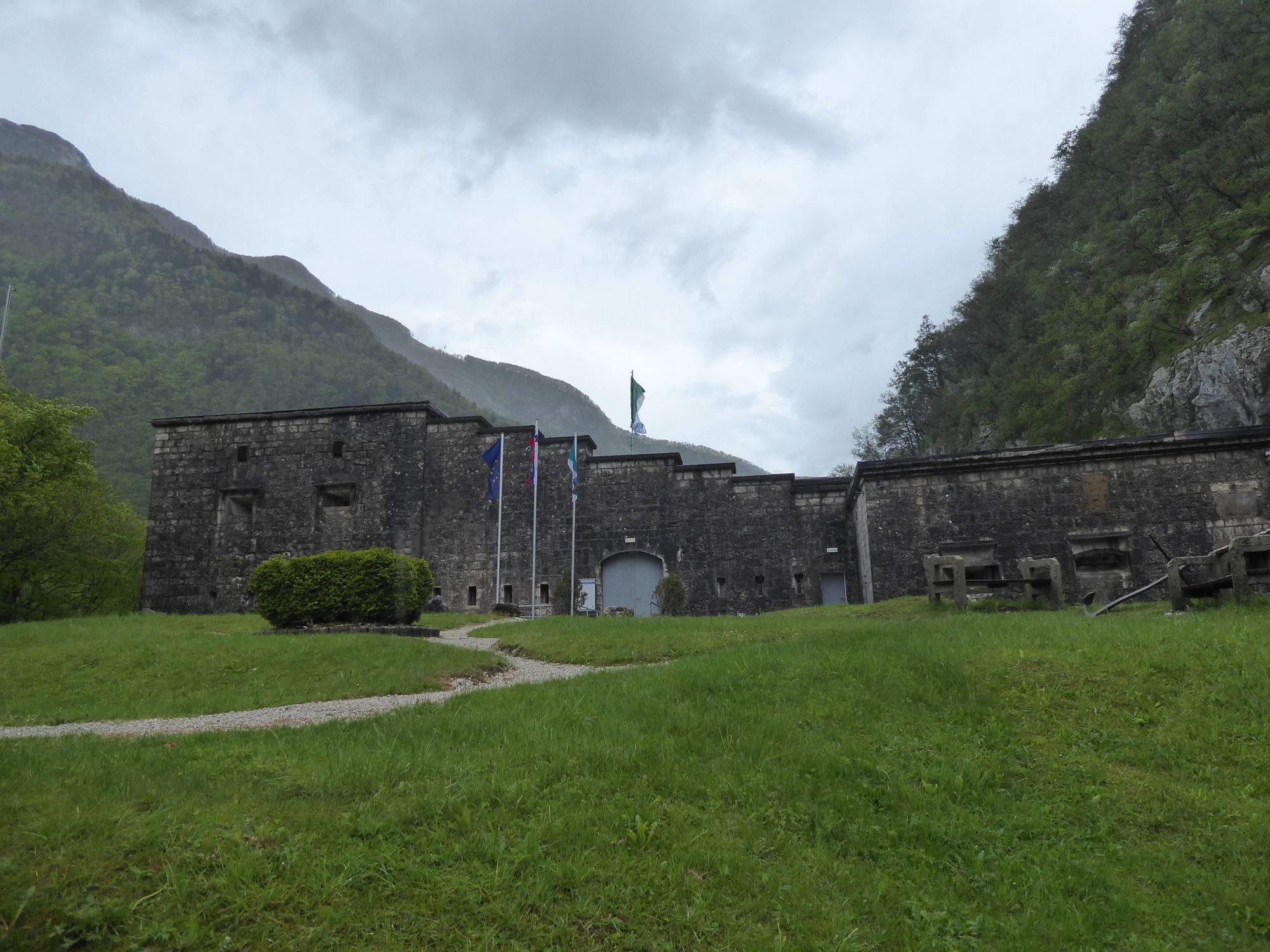
Once again we were the only people around, and we picked our way around chunks of rubble and semi-derelict fortifications. Fort Hermann was subjected to an intense Italian artillery bombardment during the First World War, hit by some 200 shells, and it was abandoned in 1915. The ruins are slowly being reclaimed by nature, the walls turning green with moss and lichens.
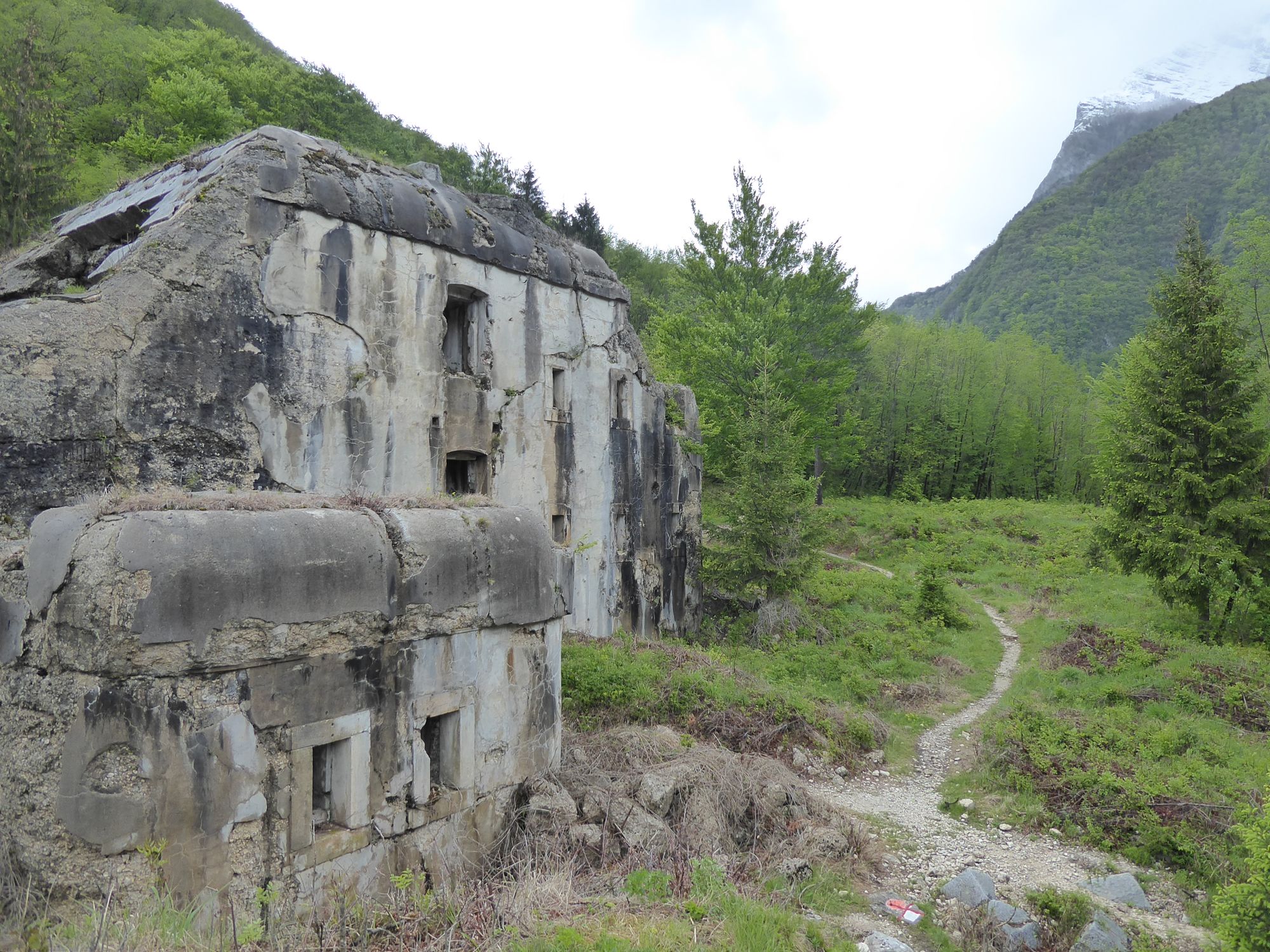
Back at the car we consulted the map, and decided to keep going along the winding valley towards the little village of Log pod Mangartom. This village is home to a small World War I cemetery, the final resting place of 859 Austro-Hungarian soldiers who fought on the Isonzo Front. Amongst the rows of iron crosses were scattered tall, thin headstones marking the graves of Muslim soldiers, Bosnians who fought for the Habsburg army.
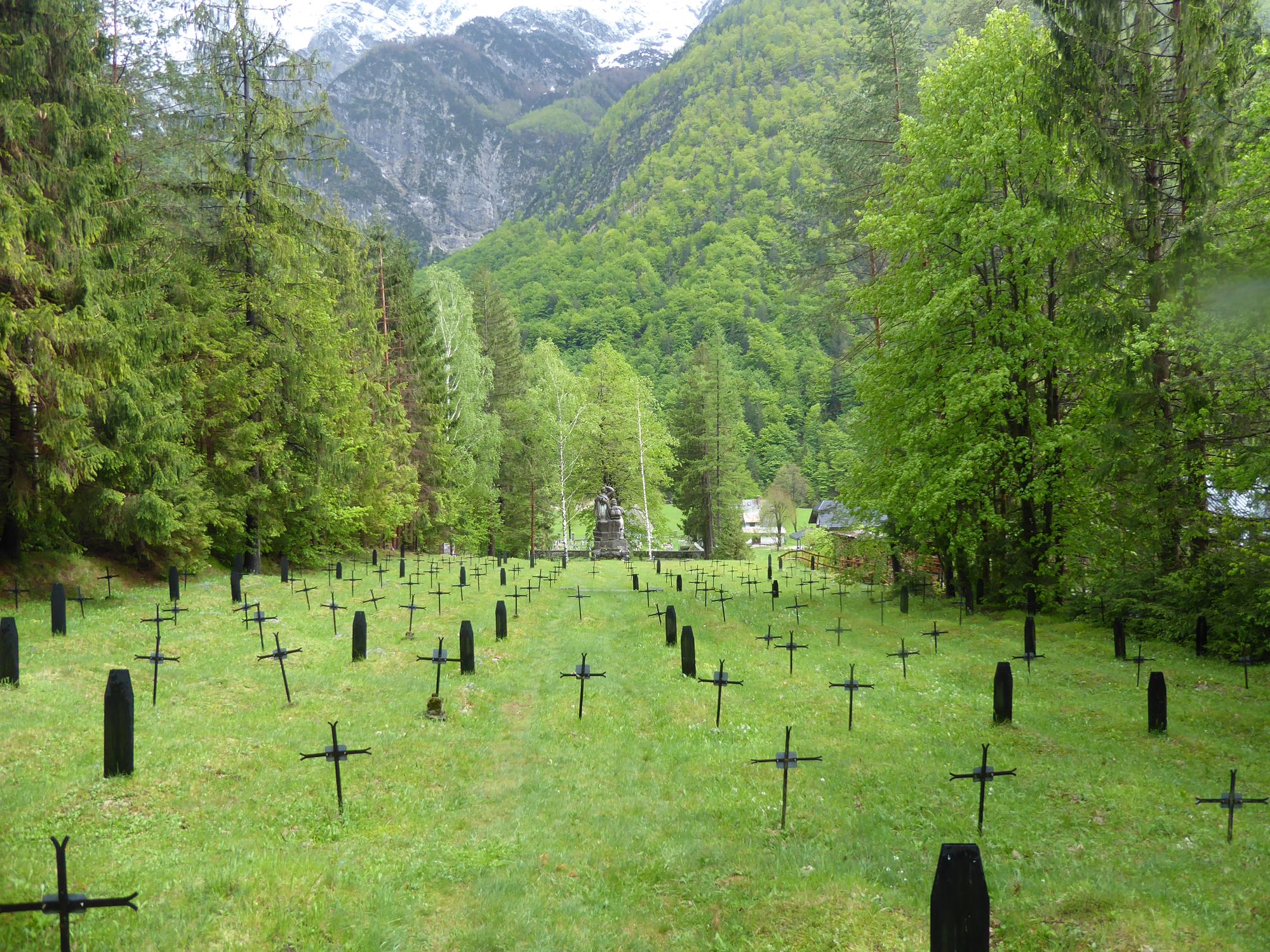
Austria-Hungary was a multi-ethnic empire comprised of many different peoples: Austrians and Hungarians, of course, but also Czechs and Slovaks, Slovenes and Croatians, Poles and Ukrainians, Jews and Muslims. In some ways this was not just a memorial to the soldiers, but to the Habsburg empire itself, which fractured along ethnic lines as Austria finally conceded defeat in 1918.
The rain had eased off a little, and a stillness hung over the cemetery, along with the smell of wood smoke drifting across from the houses at the bottom of the valley. High above us, three waterfalls cascaded down the mountainside. It was a beautiful spot, and I struggled to imagine this landscape burnt and bloodied by war, just a few generations ago.

